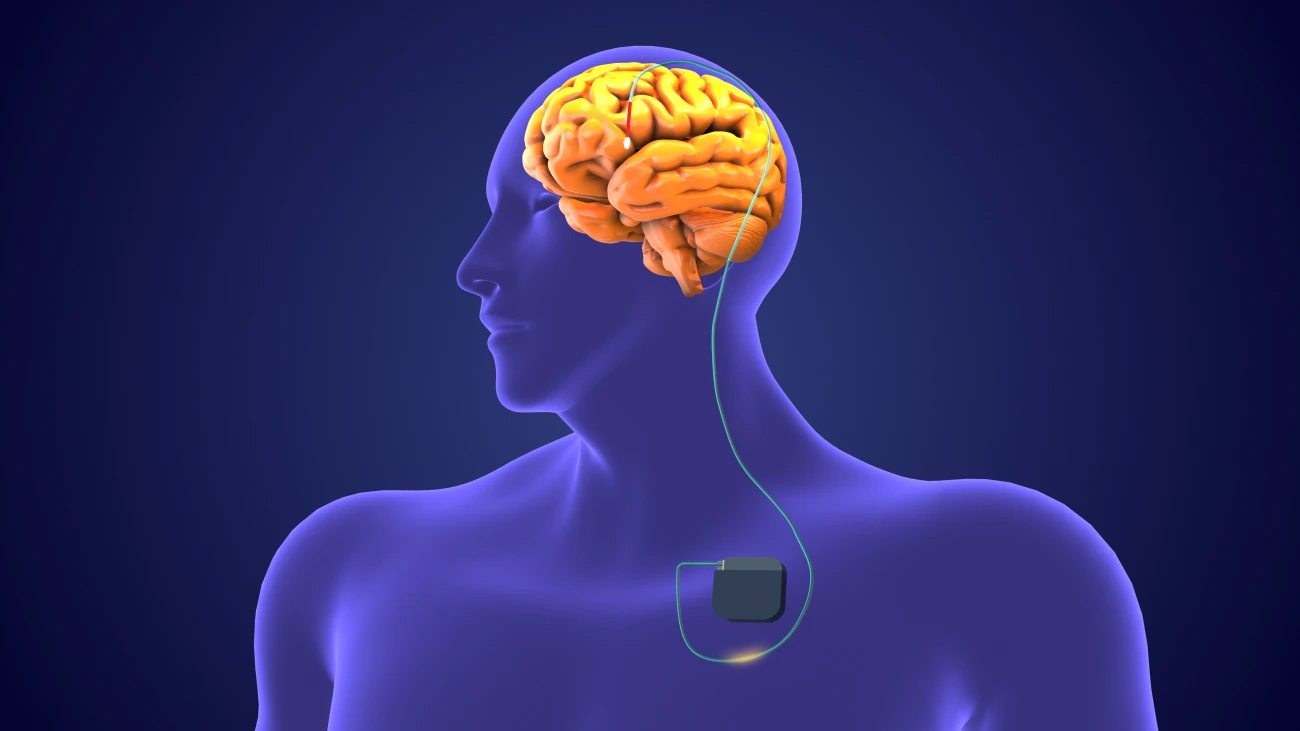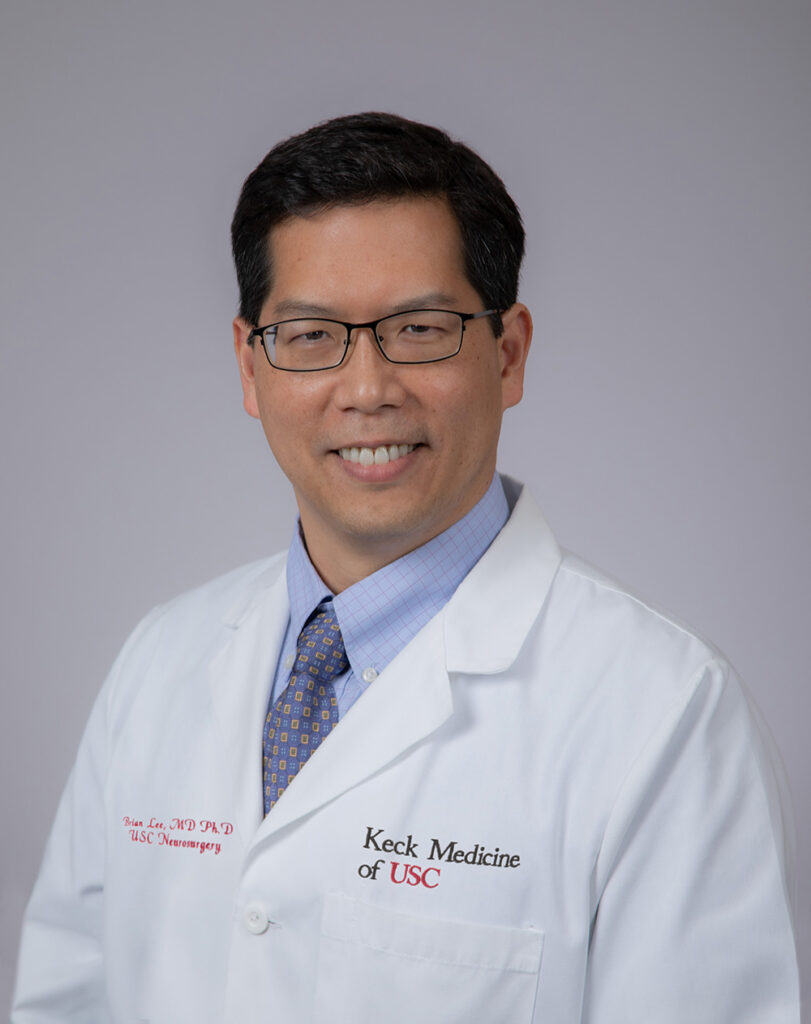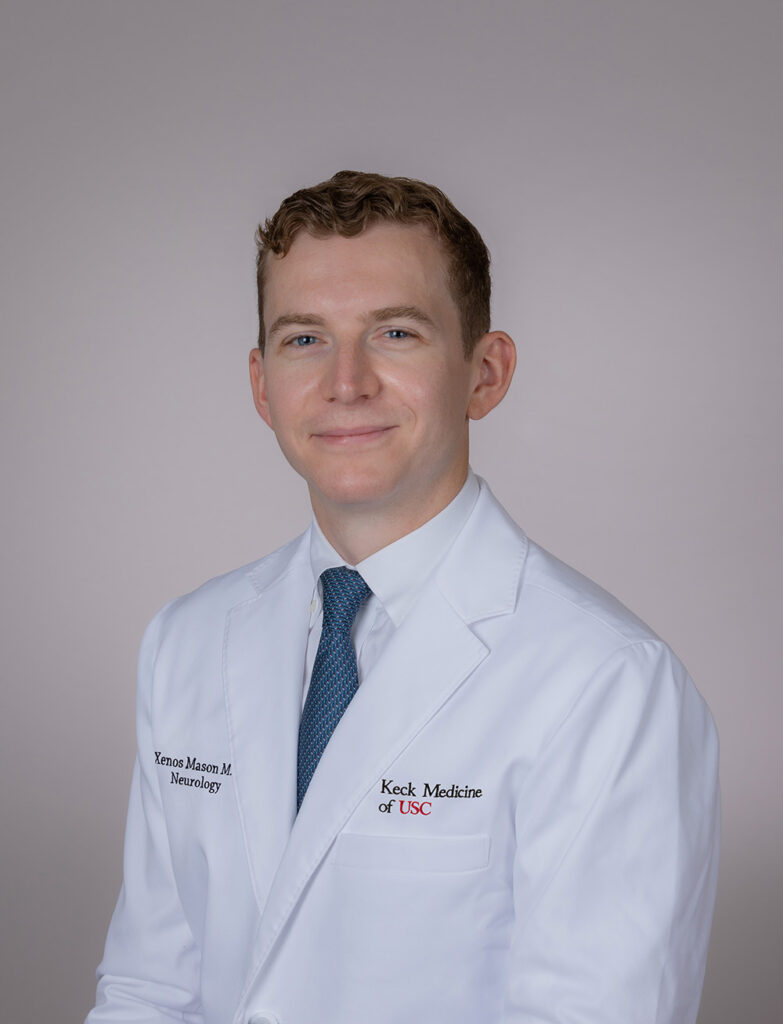
The USC Deep Brain Stimulation Center, part of Keck Medicine of USC, offers deep brain stimulation to patients while they are asleep, an option that may make patients more receptive to the procedure.
Deep brain stimulation (DBS) is an option for patients with movement disorders whose symptoms can’t be controlled by medications and psychological treatments alone. Approximately 20% of patients with movement disorders like Parkinson’s disease, essential tremor and dystonia may qualify for DBS to help control their disabling symptoms. This surgical procedure involves implanting electrodes in the brain to deliver targeted electrical stimulation. This stimulation modulates neural circuits that cause uncontrolled movements.
While DBS patients are usually awake during surgery, the USC Deep Brain Stimulation Center at Keck Medicine of USC stands out as the only center in southern California that can perform the procedure with the patient asleep.
“Many patients and providers see images from awake DBS procedures and think it looks uncomfortable,” explained Brian Lee, MD, a Keck Medicine neurosurgeon who specializes in performing asleep DBS. “Asleep DBS is a more attractive option because you go to sleep, and then you wake up and the surgery is done.”
Xenos Mason, MD, a neurologist with Keck Medicine and an assistant professor of clinical neurological surgery and neurology at the Keck School of Medicine of USC, said the idea of being awake during a brain procedure is an obstacle for some patients. The ability to perform DBS surgery with the patient asleep “removes one barrier to having this surgery, which can be life-changing.”

It was a major reason why one patient chose Keck Medicine for her care.
The situation
The patient, a woman in her 60s with Parkinson’s disease and levodopa-induced dyskinesia, “had such severe excess movements that she could barely butter toast or brush her teeth,” Dr. Mason said. The movements also caused balance problems and increased her risk of falling.
“She was the perfect candidate for DBS because she had responded well to medication in the past,” he added. But over time, “the side effects of the drugs prevented her from having good function throughout the day, and she had started to experience wide fluctuations in her level of symptom control.”

MRI-guided DBS
During a traditional DBS surgery, while the patient is awake, physicians collect neurophysiologic data that helps determine the best placement for the electrodes. Dr. Mason said that at Keck Medicine, specialists can achieve the same results by doing the surgery inside the MRI scanner with the patient asleep.
“The data consistently suggest that using interoperative MRI produces the same outcomes as awake DBS,” Dr. Mason said. The female patient was more comfortable with asleep DBS, he explained, and the data gave her the confidence to proceed.
Another benefit of asleep DBS is the ability to keep the patient still. “Before undergoing awake DBS, patients have to pause their medications, which means they may move around in the operating room because of their tremor,” Dr. Lee said.
“It’s a safety issue because they may injure themselves while attached to the equipment. But with asleep DBS, patients can stay on their regular medications.”
Dr. Lee added that asleep DBS avoids communication issues that can arise during an awake procedure when patients must follow instructions. “Parkinson’s patients oftentimes have hoarseness or low-volume speech, so trying to speak in a noisy operating room is challenging,” he said.
“In my experience, patients who don’t speak English natively also favor the asleep technique because they don’t need to worry about the communication barrier.”
The results
After surgery, DBS patients meet with a neurologist to activate the device and fine-tune the location, intensity and frequency of the electrical pulses. This process is the same whether surgery was performed with the patient awake or asleep.
The patient has responded well to DBS since undergoing the surgery in mid-2023. “Our main concern was reducing her involuntary movements, and that’s exactly what we’ve accomplished,” Dr. Mason said.
“Her movements are about 95% improved, and she has regained function and confidence.”
Leaders in DBS
Keck Medicine is one of the few medical centers in the United States with neurosurgeons who have completed the special training necessary to perform asleep DBS.
The procedure also requires a unique space since it is performed inside an MRI scanner. The USC Deep Brain Stimulation Center invested in “retrofitting an entire MRI suite into a surgical space,” Dr. Mason said.
While DBS doesn’t prevent movement disorders like Parkinson’s disease from progressing, it has the potential to significantly improve a patient’s quality of life.
USC Deep Brain Stimulation Center
The USC Deep Brain Stimulation Center provides care to decrease the symptoms of dystonia, essential tremor and other movement disorders, such as Parkinson’s disease. Specialists use deep brain stimulation (DBS) when other medical and psychological treatments do not improve a patient’s condition. The USC Deep Brain Stimulation Center is the only neurology center in southern California to provide an advanced DBS technique using real-time magnetic resonance imaging (MRI) guidance that lets patients sleep during the procedure. The center’s multidisciplinary team includes neurologists, neurosurgeons, psychiatrists, nurse practitioners, clinical psychologists, neuropsychologists and social workers.
Topics
